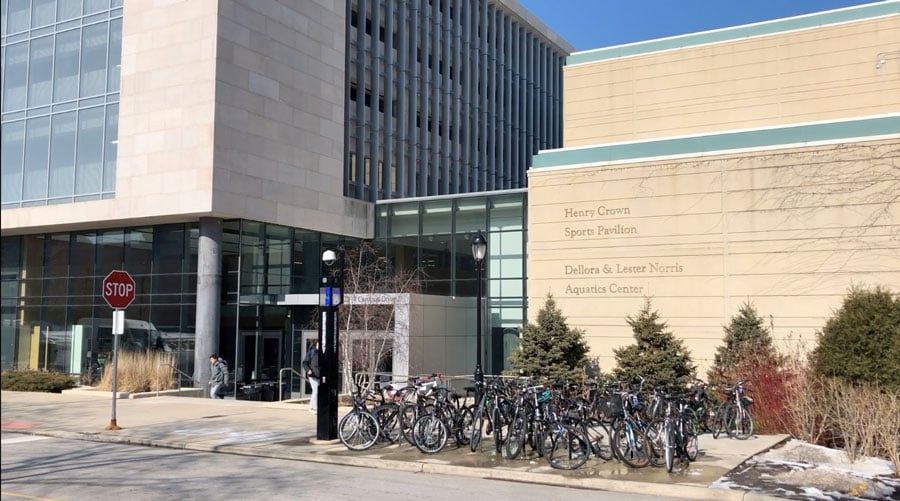Firefighters train in Norris Aquatics Center, practice for emergency situations
Daily file photo by Owen Stidman
Henry Crown Sports Pavillion. Search-and-rescue firefighters train for emergencies in the Norris Aquatics Center several times per year.
February 9, 2020
Each year, search-and-rescue firefighters in Evanston and surrounding suburbs train in the Norris Aquatics Center to prepare for emergency situations.
Although the firefighters practice in natural elements as well, they say there are benefits to doing drills in a controlled pool setting. Northwestern has one of the deepest pools in the North Shore, reaching a depth of 15 feet, which lends itself to a good training environment, Edward Martig, manager of aquatics, said.
Martig said because it is difficult and expensive for all suburban fire departments to have large, specialized teams for search and rescue, Evanston Fire Department often partners with departments in neighboring areas.
The search-and-rescue firefighters are included in a group of first responders called the Mutual Aid Box Alarm System, which compose 38,000 of the 40,000 firefighters in Illinois.
David Smrha, an EFD captain and paramedic, is the team leader of the Evanston’s nine-member dive crew. He said he responds in water-related emergencies in Evanston, but if there are calls coming from neighboring towns that need assistance, he plays a hands-off leadership role.
Smrha said the team uses the Norris Aquatics Center at least three times per year; twice for scheduled dives in December and January with the whole MABAS division three diving team, and usually once more just with Evanston divers. The divers test their equipment and perform an underwater skills exam.
“A lot of times (in Lake Michigan) you don’t have a lot of water clarity, and it’ll be 50- or 60-degree temperature which is really cold for water. For the rest of the MABAS dive sites, a lot of them are in murky ponds,” he said. “So to test new equipment in that environment would just be a disaster.”
Smrha said they often test oxygen tanks for surface level recovery operations and face masks. This year, the team also did an underwater obstacle course that involved crawling through tight spaces underwater and maneuvering with their equipment.
Smrha said the waters can be so opaque that divers can’t see their hands in front of their faces. The advantage of the pool is that anything the team wants to test out can be done in a controlled, safe environment.
“Our divers on our team are top-notch,” he said. “I’m just proud to be on a team where from the moment the 911 call comes in we could be fully dressed and ready to come get a student or a civilian in under ten minutes.”
Justin Norris, a diver on the EFD water rescue team, said he practices in the Norris Aquatics Center two or three times a year. He said the pool at Northwestern is the perfect practice environment, especially for new divers who are still getting comfortable with the equipment.
Norris said that when the entire MABAS team practices at Northwestern, another benefit is that they get used to campus.
“If there ever is an emergency here where we need our MABAS team,” Norris said. “It’s good because all those divers (learn the layout of campus).”
Email: ariannacarpati2023@u.northwestern.edu
Twitter: @ariannacarpati1



